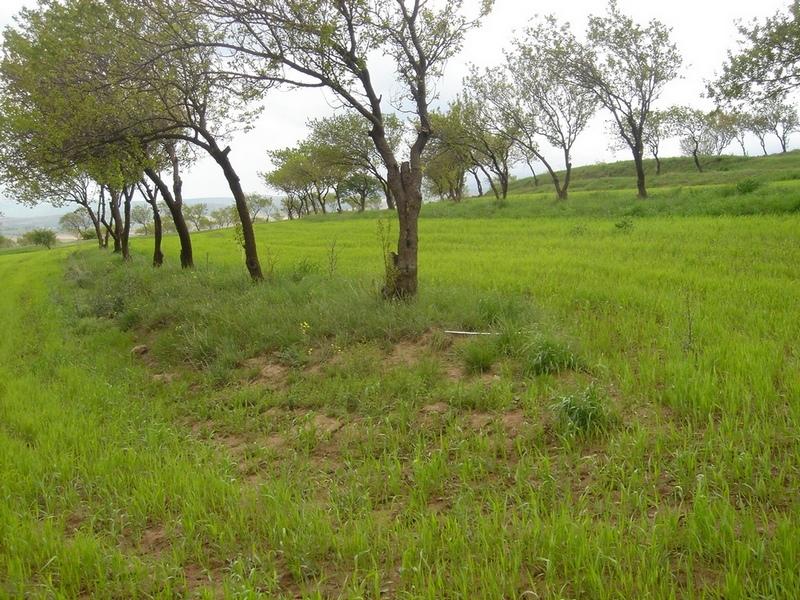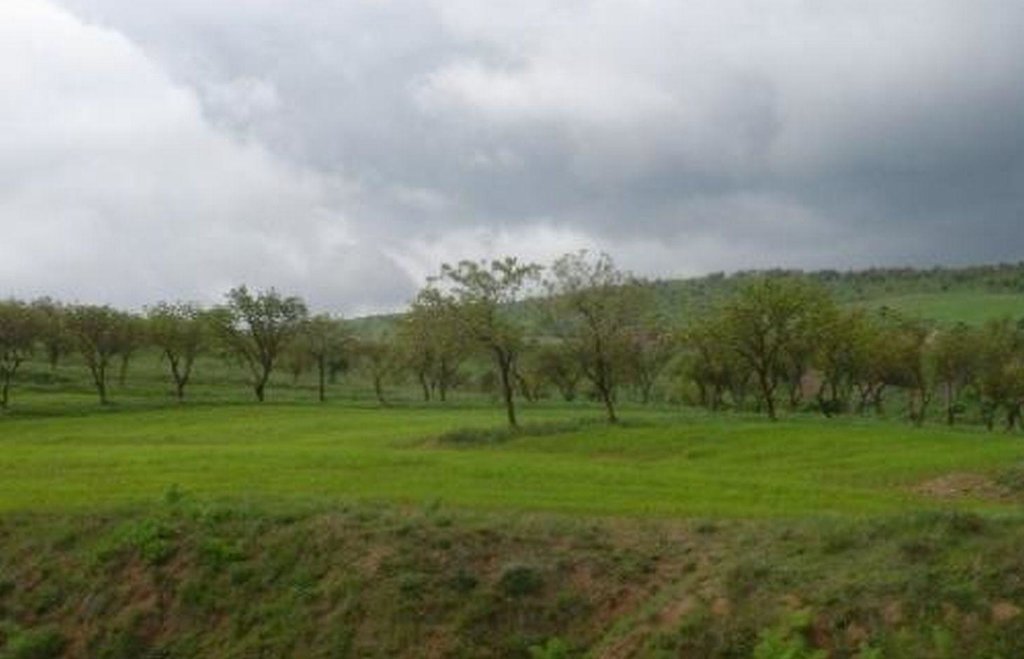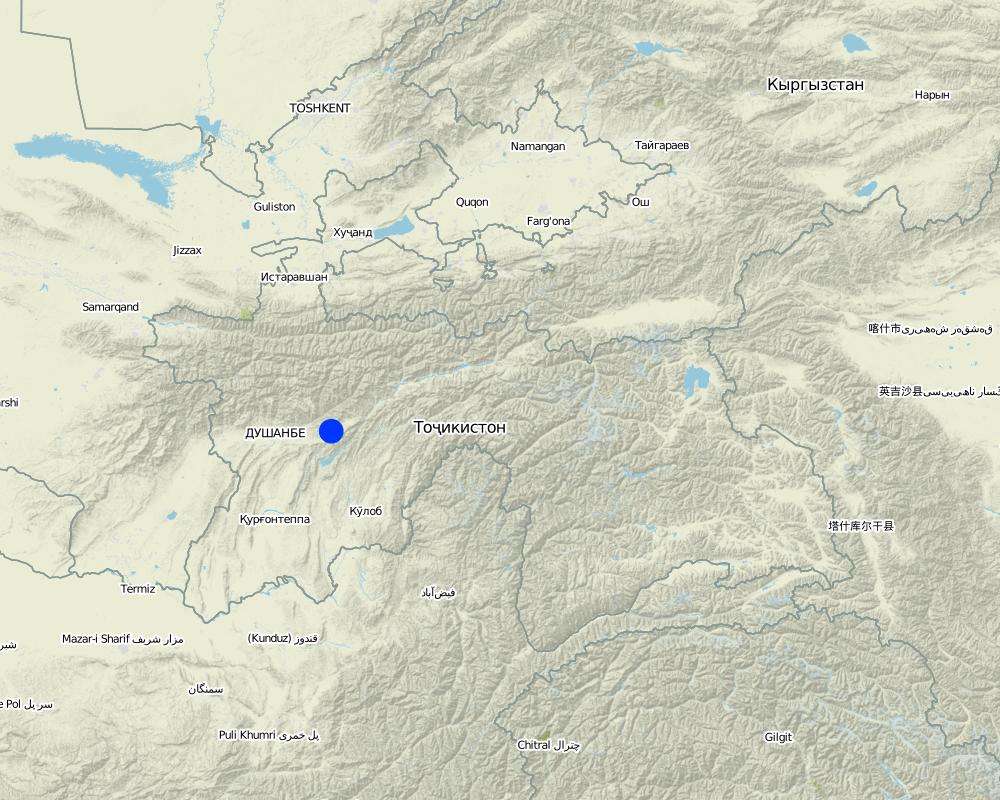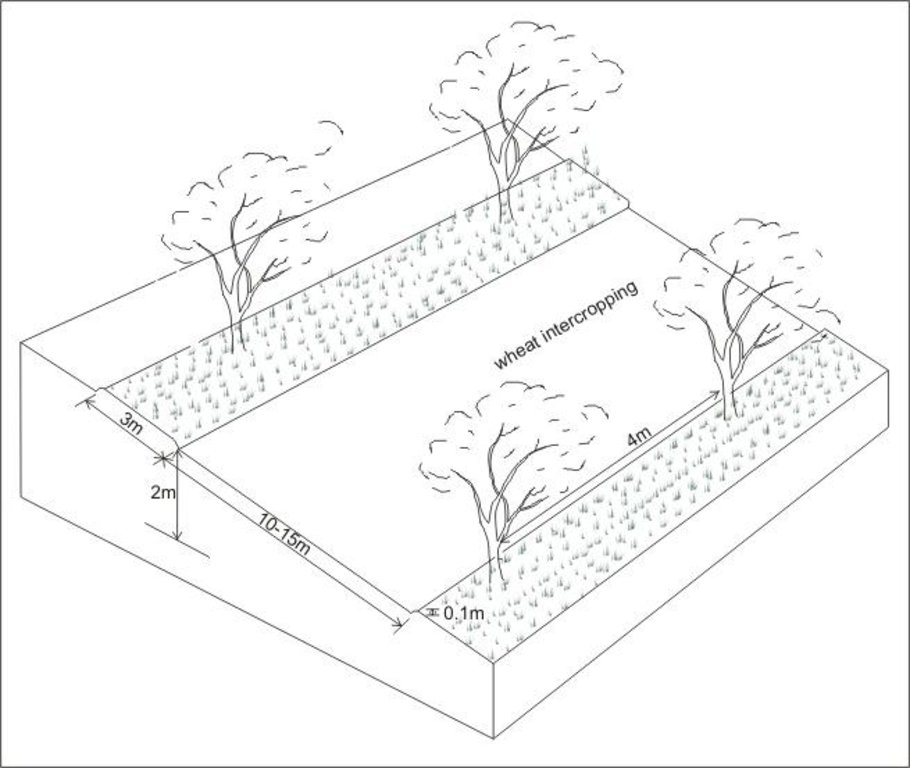Orchard-based Agroforestry (intercropping) [ทาจิกิสถาน]
- ผู้สร้างสรรค์:
- การอัพเดท:
- ผู้รวบรวม: Erik Bühlmann
- ผู้เรียบเรียง: –
- ผู้ตรวจสอบ: Alexandra Gavilano, David Streiff
technologies_1002 - ทาจิกิสถาน
- บทสรุปทั้งหมดในรูปแบบของ PDF
- บทสรุปทั้งหมดในรูปแบบของ PDF เพื่อพิมพ์
- บทสรุปทั้งหมดในรูปหน้าเว็บ
- บทสรุปทั้งหมด (ไม่มีการจัดเรียง)
- Orchard-based Agroforestry (intercropping): 2 พฤศจิกายน 2021 (public)
- Orchard-based Agroforestry (intercropping): 20 สิงหาคม 2019 (inactive)
- Orchard-based Agroforestry (intercropping): 19 กรกฎาคม 2017 (inactive)
- Orchard-based Agroforestry (intercropping): 17 กรกฎาคม 2017 (inactive)
- Orchard-based Agroforestry (intercropping): 10 มีนาคม 2017 (inactive)
ดูส่วนย่อย
ขยายทั้งหมด ย่อทั้งหมด1. ข้อมูลทั่วไป
1.2 รายละเอียดที่ติดต่อได้ของผู้รวบรวมและองค์กรที่เกี่ยวข้องในการประเมินและการจัดเตรียมทำเอกสารของเทคโนโลยี
ผู้เชี่ยวชาญ SLM:
ชื่อขององค์กรซึ่งอำนวยความสะดวกในการทำเอกสารหรือการประเมินเทคโนโลยี (ถ้าเกี่ยวข้อง)
CDE Centre for Development and Environment (CDE Centre for Development and Environment) - สวิตเซอร์แลนด์ชื่อขององค์กรซึ่งอำนวยความสะดวกในการทำเอกสารหรือการประเมินเทคโนโลยี (ถ้าเกี่ยวข้อง)
NCCR North-South (NCCR North-South) - คีร์กีซสถาน1.3 เงื่อนไขการใช้ข้อมูลที่ได้บันทึกผ่านทาง WOCAT
วันที่เก็บรวบรวมข้อมูล(ภาคสนาม) :
15/07/2005
ผู้รวบรวมและวิทยากรหลักยอมรับเงื่อนไขเกี่ยวกับการใช้ข้อมูลที่ถูกบันทึกผ่านทาง WOCAT:
ใช่
2. การอธิบายลักษณะของเทคโนโลยี SLM
2.1 การอธิบายแบบสั้น ๆ ของเทคโนโลยี
คำจำกัดความของเทคโนโลยี:
Intercropping of wheat in an existing orchard that was established during the Soviet period.
2.2 การอธิบายแบบละเอียดของเทคโนโลยี
คำอธิบาย:
The technology involves intercropping wheat in an existing apricot orchard, that was established during soviet times to increase farm production, by integrating different resources in an environment protected from soil erosion. The intercropped area is ploughed by tractor. In general, farmers do not practice crop rotation since they usually allocate cereal production to the most fertile field plots of their farm.
Along the trees aligned on contour, a three metre wide grass strip is left uncultivated to control runoff, and to protect the ground from splash erosion. Spacing between rows is 13 metres, which allows unhindered farm operations.
Most orchards in Faizabad Rayon were established during Soviet times. Tree rows were planted close together in order to obtain maximum yields from the orchard monoculture systems. Some of the tree rows were removed, allowing more space for intercropping.
Purpose of the Technology: The technology is applied in existing orchards which generally range between 10-25% in gradient. In existing orchards, intercropping alone is relatively cost intensive. Harvesting two crops at a time increases overall farm production and improves food security since harvests of intercropped food crops are found to be more reliable than those on exposed annual cropland. However, many orchards are still owned by state farms which usually do not practice intercropping. Since management of fruit trees require considerable labour and material inputs (e.g. chemicals for pest/disease control as well as fertilisers) which often cannot be met by farmers, yields of fruit trees have declined after the privatisation of these areas. Furthermore, farmers often lack knowledge of appropriate orchard management techniques and miss opportunities to gradually replace old trees by new seedlings.
2.3 รูปภาพของเทคโนโลยี
2.5 ประเทศภูมิภาค หรือสถานที่ตั้งที่เทคโนโลยีได้นำไปใช้และได้รับการครอบคลุมโดยการประเมินนี้
ประเทศ:
ทาจิกิสถาน
ภูมิภาค/รัฐ/จังหวัด:
Tajikistan
ข้อมูลจำเพาะเพิ่มเติมของสถานที่ตั้ง :
Faizabad Rayon
Map
×3. การจัดประเภทของเทคโนโลยี SLM
3.1 วัตถุประสงค์หลักของเทคโนโลยี
- ปรับปรุงการผลิตให้ดีขึ้น
3.2 ประเภทของการใช้ที่ดินในปัจจุบันที่ได้นำเทคโนโลยีไปใช้

พื้นที่ปลูกพืช
- การปลูกพืชล้มลุกอายุปีเดียว

การใช้ที่ดินแบบผสมผสาน (รวมถึงวนเกษตร)
- วนเกษตร (Agroforestry)
ผลิตภัณฑ์หลักหรือบริการ:
major cash crop: fruits
major food crop: wheat
other: chickpeas, flax, perennial herbaceous fodder plant
แสดงความคิดเห็น:
Major land use problems (compiler’s opinion): severe water erosion (rills and gullies) and subsequent fertility decline on cropland and overgrazed pastures
Major land use problems (land users’ perception): fertility decline, soil erosion and washing downslope of seeds before they can sprout
Type of cropping system and major crops comments: Intercropped winter wheat and sometimes chickpeas are sown in autumn; flax, alfa alfa, esparzet, and also chickpeas are sown in early spring
3.3 ข้อมูลเพิ่มเติมเกี่ยวกับการใช้ที่ดิน
การใช้น้ำของที่ดินที่มีการใช้เทคโนโลยีอยู่:
- จากน้ำฝน
3.4 กลุ่ม SLM ที่ตรงกับเทคโนโลยีนี้
- การปลูกป่าร่วมกับพืช
3.5 กระจายตัวของเทคโนโลยี
ระบุการกระจายตัวของเทคโนโลยี:
- กระจายไปอย่างสม่ำเสมอในพื้นที่
ถ้าหากว่าเทคโนโลยีได้มีการกระจายออกไปอย่างสม่ำเสมอในพื้นที่ ให้ระบุปริมาณพื้นที่ที่ได้รับการครอบคลุมถึง:
- 1-10 ตร.กม.
3.6 มาตรการ SLM ที่ประกอบกันเป็นเทคโนโลยี

มาตรการจัดการพืช
- A6: อื่นๆ

มาตรการอนุรักษ์ด้วยวิธีพืช
- V5: อื่นๆ

มาตรการอนุรักษ์ด้วยการจัดการ
- M1: การเปลี่ยนรูปแบบของการใช้ประโยชน์ที่ดิน
แสดงความคิดเห็น:
Main measures: agronomic measures
Secondary measures: vegetative measures
Type of agronomic measures: mixed cropping / intercropping, mineral (inorganic) fertilizers, contour tillage
Type of vegetative measures: aligned: -contour
3.7 รูปแบบหลักของการเสื่อมโทรมของที่ดินที่ได้รับการแก้ไขโดยเทคโนโลยี

การกัดกร่อนของดินโดยน้ำ
- Wt (Loss of topsoil): การสูญเสียดินชั้นบนหรือการกัดกร่อนที่ผิวดิน
- Wg (Gully erosion): การกัดกร่อนแบบร่องธารหรือการทำให้เกิดร่องน้ำเซาะ

การเสื่อมโทรมของดินทางด้านเคมี
- Cn (Fertility decline): ความอุดมสมบูรณ์และปริมาณอินทรียวัตถุในดินถูกทำให้ลดลงไป (ไม่ได้เกิดจากสาเหตุการกัดกร่อน)
แสดงความคิดเห็น:
Main type of degradation addressed: Wt: loss of topsoil / surface erosion
Secondary types of degradation addressed: Wg: gully erosion / gullying, Cn: fertility decline and reduced organic matter content
3.8 การป้องกัน การลดลง หรือการฟื้นฟูความเสื่อมโทรมของที่ดิน
ระบุเป้าหมายของเทคโนโลยีกับความเสื่อมโทรมของที่ดิน:
- ป้องกันความเสื่อมโทรมของที่ดิน
- ลดความเสื่อมโทรมของดิน
แสดงความคิดเห็น:
Main goals: mitigation / reduction of land degradation
Secondary goals: prevention of land degradation
4. ข้อมูลจำเพาะด้านเทคนิค กิจกรรมการนำไปปฏิบัติใช้ ปัจจัยนำเข้า และค่าใช้จ่าย
4.1 แบบแปลนทางเทคนิคของเทคโนโลยี
4.2 ข้อมูลจำเพาะด้านเทคนิคและการอธิบายแบบแปลนทางเทคนิค
Intercropping of wheat between apricot trees aligned on contour
Location: Chinoro. Faizabad Rayon, RRS
Technical knowledge required for field staff / advisors: moderate
Technical knowledge required for land users: moderate
Main technical functions: control of dispersed runoff: impede / retard, control of concentrated runoff: impede / retard, reduction of slope length
Secondary technical functions: increase in nutrient availability (supply, recycling,…), increase of infiltration, increase / maintain water stored in soil, reduction in wind speed, increase in soil fertility
Mixed cropping / intercropping
Material/ species: winter wheat
Quantity/ density: 150kg/ha
Remarks: intercropping between tree rows
Mineral (inorganic) fertilizers
Material/ species: superphosphate, silitra
Quantity/ density: 200kg
Remarks: only for intercropped wheat
Contour tillage
Remarks: between tree rows
Aligned: -contour
Vegetative material: F : fruit trees / shrubs
Number of plants per (ha): 200
Vertical interval between rows / strips / blocks (m): 2
Spacing between rows / strips / blocks (m): 13
Vertical interval within rows / strips / blocks (m): 4
Vegetative measure: aligned: contour
Vegetative material: G : grass
Vertical interval between rows / strips / blocks (m): 2
Spacing between rows / strips / blocks (m): 10
Width within rows / strips / blocks (m): 3
Vegetative measure: Vegetative material: G : grass
Vegetative measure: Vegetative material: G : grass
Vegetative measure: Vegetative material: G : grass
Fruit trees / shrubs species: apricot trees
Slope (which determines the spacing indicated above): 18.00%
Gradient along the rows / strips: 0.00%
4.3 ข้อมูลทั่วไปเกี่ยวกับการคำนวณปัจจัยนำเข้าและค่าใช้จ่าย
ระบุสกุลเงินที่ใช้คำนวณค่าใช้จ่าย:
- ดอลลาร์สหรัฐ
ระบุค่าเฉลี่ยของค่าจ้างในการจ้างแรงงานต่อวัน:
3.00
4.4 กิจกรรมเพื่อการจัดตั้ง
| กิจกรรม | ประเภทของมาตรการ | ช่วงเวลาดำเนินการ | |
|---|---|---|---|
| 1. | establishment of apricot orchard by state enterprise | ด้วยวิธีพืช | established in 1989 |
| 2. | acquiring land use rights for existing orchard lands from local authorities | ด้วยวิธีพืช | |
| 3. | thinning and clearing of tree rows | ด้วยวิธีพืช |
4.5 ค่าใช้จ่ายของปัจจัยนำเข้าที่จำเป็นสำหรับการจัดตั้ง
| ปัจจัยนำเข้า | หน่วย | ปริมาณ | ค่าใช้จ่ายต่อหน่วย | ค่าใช้จ่ายทั้งหมดต่อปัจจัยนำเข้า | %ของค่าใช้จ่ายที่ก่อให้เกิดขึ้นโดยผู้ใช้ที่ดิน | |
|---|---|---|---|---|---|---|
| แรงงาน | thinning and clearing of tree rows | ha | 1.0 | 6.0 | 6.0 | 100.0 |
| อุปกรณ์ | tools | ha | 1.0 | 25.0 | 25.0 | 100.0 |
| ค่าใช้จ่ายทั้งหมดของการจัดตั้งเทคโนโลยี | 31.0 | |||||
แสดงความคิดเห็น:
Duration of establishment phase: 0 month(s)
4.6 การบำรุงรักษาสภาพหรือกิจกรรมที่เกิดขึ้นเป็นประจำ
| กิจกรรม | ประเภทของมาตรการ | ช่วงระยะเวลา/ความถี่ | |
|---|---|---|---|
| 1. | disc ploughing (area for intercropping) | จัดการพืช | before sowing / annual |
| 2. | sowing (winter wheat) | จัดการพืช | |
| 3. | applying of fertiliser | จัดการพืช | early spring / each cropping season |
| 4. | harvesting | จัดการพืช | summer / each cropping season |
| 5. | pruning of fruit trees | ด้วยวิธีพืช | autumn/winter /annual |
| 6. | cutting of grass strip | ด้วยวิธีพืช | summer /annual |
| 7. | applying manure for fruit trees | ด้วยวิธีพืช | winter/early spring /annual |
| 8. | removal of twiggs affected by insects/deseases | ด้วยวิธีพืช | spring /weekly |
4.7 ค่าใช้จ่ายของปัจจัยนำเข้าและกิจกรรมที่เกิดขึ้นเป็นประจำที่ต้องการการบำรุงรักษา (ต่อปี)
| ปัจจัยนำเข้า | หน่วย | ปริมาณ | ค่าใช้จ่ายต่อหน่วย | ค่าใช้จ่ายทั้งหมดต่อปัจจัยนำเข้า | %ของค่าใช้จ่ายที่ก่อให้เกิดขึ้นโดยผู้ใช้ที่ดิน | |
|---|---|---|---|---|---|---|
| แรงงาน | sowing and weeding | ha | 1.0 | 18.0 | 18.0 | 100.0 |
| แรงงาน | pruning of fruit trees | ha | 1.0 | 45.0 | 45.0 | 100.0 |
| แรงงาน | cutting of twiggs affe | ha | 1.0 | 15.0 | 15.0 | 100.0 |
| อุปกรณ์ | machine use | ha | 1.0 | 20.0 | 20.0 | 100.0 |
| วัสดุด้านพืช | seeds | ha | 1.0 | 30.0 | 30.0 | 100.0 |
| ปุ๋ยและสารฆ่า/ยับยั้งการเจริญเติบโตของสิ่งมีชีวิต (ไบโอไซด์) | fertilizer | ha | 1.0 | 50.0 | 50.0 | 100.0 |
| ปุ๋ยและสารฆ่า/ยับยั้งการเจริญเติบโตของสิ่งมีชีวิต (ไบโอไซด์) | compost/manure | ha | 1.0 | 40.0 | 40.0 | 100.0 |
| ค่าใช้จ่ายทั้งหมดของการบำรุงรักษาสภาพเทคโนโลยี | 218.0 | |||||
แสดงความคิดเห็น:
Machinery/ tools: tools: saw, sickle, pruning shears, fork, bucket
per hectare (with the described spacing of trees and tree rows)
4.8 ปัจจัยสำคัญที่สุดที่มีผลกระทบต่อค่าใช้จ่าย
ปัจจัยสำคัญที่สุดที่มีผลกระทบต่อค่าใช้จ่ายต่างๆ:
The number of trees influences costs considerably, since orchard management is labour and input intensive
5. สิ่งแวดล้อมทางธรรมชาติและของมนุษย์
5.1 ภูมิอากาศ
ฝนประจำปี
- < 250 ม.ม.
- 251-500 ม.ม.
- 501-750 ม.ม.
- 751-1,000 ม.ม.
- 1,001-1,500 ม.ม.
- 1,501-2,000 ม.ม.
- 2,001-3,000 ม.ม.
- 3,001-4,000 ม.ม.
- > 4,000 ม.ม.
เขตภูมิอากาศเกษตร
- กึ่งชุ่มชื้น
- กึ่งแห้งแล้ง
growing period between 180-210 days
5.2 สภาพภูมิประเทศ
ค่าเฉลี่ยความลาดชัน:
- ราบเรียบ (0-2%)
- ลาดที่ไม่ชัน (3-5%)
- ปานกลาง (6-10%)
- เป็นลูกคลื่น (11-15%)
- เป็นเนิน (16-30%)
- ชัน (31-60%)
- ชันมาก (>60%)
ธรณีสัณฐาน:
- ที่ราบสูง/ที่ราบ
- สันเขา
- ไหล่เขา
- ไหล่เนินเขา
- ตีนเนิน
- หุบเขา
ระดับความสูง:
- 0-100 เมตร
- 101-500 เมตร
- 501-1,000 เมตร
- 1,001-1,500 เมตร
- 1,501-2,000 เมตร
- 2,001-2,500 เมตร
- 2,501-3,000 เมตร
- 3,001-4,000 เมตร
- > 4,000 เมตร
ความคิดเห็นและข้อมูลจำเพาะเพิ่มเติมเรื่องสภาพภูมิประเทศ:
Landforms: Also valley floors
5.3 ดิน
ค่าเฉลี่ยความลึกของดิน:
- ตื้นมาก (0-20 ซ.ม.)
- ตื้น (21-50 ซ.ม.)
- ลึกปานกลาง (51-80 ซ.ม.)
- ลึก (81-120 ซ.ม.)
- ลึกมาก (>120 ซ.ม.)
เนื้อดิน (ดินชั้นบน):
- ปานกลาง (ดินร่วน ทรายแป้ง)
- ละเอียด/หนัก (ดินเหนียว)
อินทรียวัตถุในดิน:
- ปานกลาง (1-3%)
- ต่ำ (<1%)
(ถ้ามี) ให้แนบคำอธิบายเรื่องดินแบบเต็มหรือระบุข้อมูลที่มีอยู่ เช่น ชนิดของดิน ค่า pH ของดินหรือความเป็นกรดของดิน ความสามารถในการแลกเปลี่ยนประจุบวก ไนโตรเจน ความเค็ม เป็นต้น:
Soil fertility: low-high
Soil drainage / infiltration: medium - good
5.6 ลักษณะของผู้ใช้ที่ดินที่นำเทคโนโลยีไปปฏิบัติใช้
แนวทางการตลาดของระบบการผลิต:
- เพื่อการยังชีพ (หาเลี้ยงตนเอง)
- ผสม (การเลี้ยงชีพ/ทำการค้า)
รายได้ที่มาจากนอกฟาร์ม:
- > 50% ของรายได้ทั้งหมด
ระดับของความมั่งคั่งโดยเปรียบเทียบ:
- พอมีพอกิน
- รวย
ระดับของการใช้เครื่องจักรกล:
- งานที่ใช้แรงกาย
- การใช้เครื่องจักรหรือเครื่องยนต์
ระบุลักษณะอื่นๆที่เกี่ยวข้องของผู้ใช้ที่ดิน:
5% of the land users are rich and own 15% of the land.
75% of the land users are average wealthy and own 70% of the land (local authorities sometimes need to be bribed in order to acquire land use rights for orchard land).
Off-farm income specification: In general, all farmers (including those applying SWC technologies) are highly dependent on off-farm income, which in most cases is earned in Russia either by themselves or by their relatives.
Market orientation of production system subsistence (self-supply): Only surpluses are sold or exchanged for other goods
Level of mechanization: Ploughing is carried out using a tractor whenever possible, but animal traction also existent.
5.7 พื้นที่เฉลี่ยของที่ดินที่เป็นเจ้าของหรือเช่าโดยผู้ใช้ที่ดินที่นำเทคโนโลยีไปปฏิบัติใช้
- < 0.5 เฮกตาร์
- 0.5-1 เฮกตาร์
- 1-2 เฮกตาร์
- 2-5 เฮกตาร์
- 5-15 เฮกตาร์
- 15-50 เฮกตาร์
- 50-100 เฮกตาร์
- 100-500 เฮกตาร์
- 500-1,000 เฮกตาร์
- 1,000-10,000 เฮกตาร์
- >10,000 เฮกตาร์
แสดงความคิดเห็น:
Average area of land owned or leased by land users applying the Technology also 0.5-1 ha
Households with 1-2 ha are depending on available working force, labour is limiting factor
5.8 กรรมสิทธิ์ในที่ดิน สิทธิในการใช้ที่ดินและสิทธิในการใช้น้ำ
กรรมสิทธิ์ในที่ดิน:
- รัฐ
สิทธิในการใช้ที่ดิน:
- เช่า
6. ผลกระทบและสรุปคำบอกกล่าว
6.1 ผลกระทบในพื้นที่ดำเนินการ (On-site) จากการใช้เทคโนโลยี
ผลกระทบทางด้านเศรษฐกิจและสังคม
การผลิต
การผลิตพืชผล
การจัดการที่ดิน
แสดงความคิดเห็น/ระบุ:
due to intercropping, management of trees gets more difficult
รายได้และค่าใช้จ่าย
ค่าใช่จ่ายของปัจจัยการผลิตทางการเกษตร
แสดงความคิดเห็น/ระบุ:
intercropped wheat requires additional inputs to an already input intensive orchard system
รายได้จากฟาร์ม
ผลกระทบทางด้านเศรษฐกิจและสังคมอื่น ๆ
fruit production
แสดงความคิดเห็น/ระบุ:
due to lack of fertilisers and pesticides
fruit yields
แสดงความคิดเห็น/ระบุ:
due to inappropriate pruning
ผลกระทบด้านสังคมวัฒนธรรมอื่น ๆ
การบรรเทาความขัดแย้ง
6.4 การวิเคราะห์ค่าใช้จ่ายและผลประโยชน์ที่ได้รับ
ผลประโยชน์ที่ได้รับเปรียบเทียบกับค่าใช้จ่ายในการจัดตั้งเป็นอย่างไร (จากมุมมองของผู้ใช้ที่ดิน)
ผลตอบแทนระยะสั้น:
ด้านบวกอย่างมาก
ผลตอบแทนระยะยาว:
ด้านบวกอย่างมาก
ผลประโยชน์ที่ได้รับเปรียบเทียบกับค่าใช้จ่ายในการบำรุงรักษาหรือต้นทุนที่เกิดขึ้นซ้ำอีก เป็นอย่างไร (จากมุมมองของผู้ใช้ที่ดิน)
ผลตอบแทนระยะสั้น:
ด้านบวกอย่างมาก
ผลตอบแทนระยะยาว:
ด้านบวกอย่างมาก
6.5 การปรับตัวของเทคโนโลยี
ถ้ามีข้อมูลให้บอกปริมาณด้วย (จำนวนของครัวเรือนหรือครอบคลุมพื้นที่):
NA
จากทั้งหมดที่ได้รับเทคโนโลยีเข้ามามีจำนวนเท่าใดที่ทำแบบทันที โดยไม่ได้รับการจูงใจด้านวัสดุหรือการเงินใด ๆ:
- 90-100%
แสดงความคิดเห็น:
100% of land user families have adopted the Technology without any external material support
Comments on spontaneous adoption: estimates
There is a little trend towards spontaneous adoption of the Technology
Comments on adoption trend: In general, there is a growing demand for orchard land for intercropping. However, a considerable amount of orchards are still managed by state farms which usually do not maintain intercropping systems.
6.7 จุดแข็ง / ข้อได้เปรียบ / โอกาสของเทคโนโลยี
| จุดแข็ง / ข้อได้เปรียบ / โอกาสในทัศนคติของผู้ใช้ที่ดิน |
|---|
|
two harvests at a time How can they be sustained / enhanced? increase in farm production |
| good wheat harvests in intercropping systems |
| จุดแข็ง / ข้อได้เปรียบ / โอกาสในทัศนคติของผู้รวบรวมหรือวิทยากรหลัก |
|---|
| low costs for establishment (intercropping only) |
| wheat production with very little soil erosion |
| intercropping can improve food security of low income families |
6.8 จุดอ่อน / ข้อเสียเปรียบ / ความเสี่ยงของเทคโนโลยีและวิธีการแก้ไข
| จุดอ่อน / ข้อเสียเปรียบ / ความเสี่ยงในทัศนคติของผู้ใช้ที่ดิน | มีวิธีการแก้ไขได้อย่างไร |
|---|---|
| yield of fruit trees insufficient because required inputs are not affordable | gradually replace old trees by new seedlings |
| Insufficient yields of intercropped plants because of shadow of old/large fruit trees | |
| orchard systems vulnerable to pests, late frost and strong winds |
| จุดอ่อน / ข้อเสียเปรียบ / ความเสี่ยงในทัศนคติของผู้รวบรวมหรือวิทยากรหลัก | มีวิธีการแก้ไขได้อย่างไร |
|---|---|
| productive orchard systems require considerable amounts of recurrent inputs (e.g. chemicals for pest/disease control, fertiliser) which locals often cannot afford | avoiding intercropping of sparsely growing crops in vulnerable intercropping systems; improving ground cover by mulching |
| in comparison to orchards with an intact grass cover, intercropping of sparcely growing plant species increases the risk of soil erosion | |
| intercropped wheat hinders maintenance activities of fruit trees |
ลิงก์และโมดูล
ขยายทั้งหมด ย่อทั้งหมดลิงก์
ไม่มีลิงก์
โมดูล
ไม่มีโมดูล







